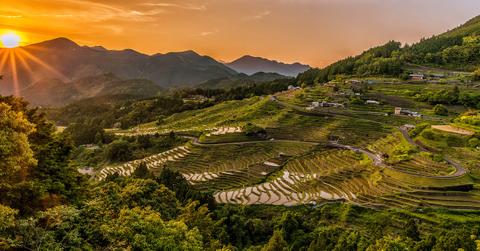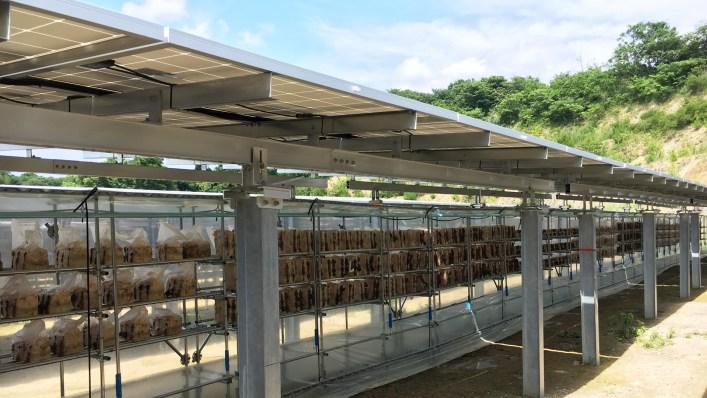Farmers In Japan To Merge Mushroom Growing With Solar Energy
As rural populations shrink and small farms struggle to survive, farmers in Japan are turning to a new a crop: cloud ear mushrooms, grown under the solar panels that are replacing farms throughout the country.
Updated May 24 2019, 9:24 a.m. ET
As rural populations shrink and small farms struggle to survive, farmers in Japan are turning to a new a crop: cloud ear mushrooms, grown under the solar panels that are replacing farms throughout the country.
An estimated 10 percent of Japanese farmland is not in use, despite a great need for more agriculture; interestingly, the majority of food in Japan is imported from other countries. In the past, the government has discouraged companies from converting farmland to fields of solar panels, but a change in regulations in 2013 made it legal to do so, as long as the panels didn't replace farms. How can they possibly work? Easy: They can construct solar panels alongside farms. The challenge here, of course, is that farmers need to choose crops that require little light.
Enter the mushroom.
The farms utilizing this "solar sharing" method will produce a combined 4,000 kilowatts of solar power that will be sold to a local utility while also yielding 40 tons of cloud-ear mushrooms a year, a crop that was previously imported from China. The symbiotic system will help stabilize the incomes of Japan's farmers by letting them sell both energy and produce food, while also contributing to a more environmentally conscious future for the whole country.
“There is no doubt that Japanese agriculture is facing a serious crisis–the average age of Japanese farmers has been rising, and abandoned farmland has been expanding, mainly due to [the] severe economic position of farmers,” Minami Kikuchi, leader of the solar sharing project at renewable energy startup Sustainergy, told Fast Company. “To make improvements in this situation, we designed the project of combination with solar farms at large scale so that farmers could obtain additional stable income. Of course, this renewable energy technology is contributing to the sustainable development of Japan too.”
Kikuchi believes there is potential for growing other crops like this as well, including potatoes, which need little light to thrive. Other solar sharing projects are exploring a wider range of crops, including a farm in South Deerfield, Massachusetts, that has spent the last two years growing plants like kale, broccoli, and chard under rows of nine-foot-high solar panels. Some studies have even shown that the shade provided by solar panels can actually help crops thrive, particularly in hot areas, where crop yields can be essentially equal to that of plants in an open field.
Solar sharing farmers have still another option for the space beneath their panels: grazing sheep or cattle. The livestock can take the place of lawnmowers and feed on the abundance of grass that naturally grows, and as the grass sucks up carbon dioxide from the atmosphere, the farm can have a negative carbon footprint. Which adds to the overall eco-friendliness of the method.
“Putting solar panels on land that is currently growing food, and putting it into solar panels that are only ‘growing’ electricity is not a good thing to do," said Stephen Herbert, a professor of agronomy at the University of Massachusetts. "We could do both.”

